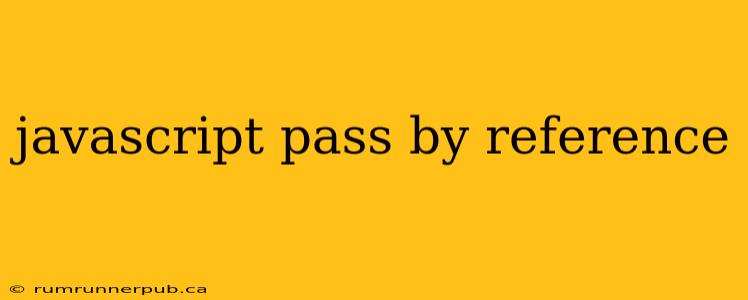JavaScript's behavior regarding passing arguments to functions often leads to confusion, especially for programmers coming from languages with explicit pass-by-reference or pass-by-value mechanisms. While JavaScript doesn't have a strict pass-by-value or pass-by-reference system in the traditional sense, understanding how it handles data is crucial for writing bug-free code. This article will clarify this concept using insights from Stack Overflow and adding practical examples.
The Myth of Pass-by-Value in JavaScript
A common misconception is that JavaScript uses pass-by-value. While it appears to be pass-by-value for primitive data types (like numbers, strings, booleans), the reality is more nuanced. Let's explore this with an example:
function changeValue(num) {
num = 100;
}
let myNum = 50;
changeValue(myNum);
console.log(myNum); // Output: 50
The output remains 50. This seems to support pass-by-value – the function received a copy of myNum. However, this changes when we deal with objects:
function changeObject(obj) {
obj.name = "New Name";
}
let myObject = { name: "Old Name" };
changeObject(myObject);
console.log(myObject.name); // Output: New Name
Here, the function modified the original object. This behavior is often described as "pass-by-sharing" or "pass-by-reference". The function didn't receive a copy of the object; instead, it received a reference to the original object in memory. This key difference is crucial.
Analysis based on Stack Overflow discussions: Many Stack Overflow questions (e.g., similar to those tackling "Javascript pass by reference vs pass by value" ) highlight the confusion surrounding this. Users often struggle to predict the outcome when modifying objects within functions. This behavior is often explained more clearly in answers that emphasize the concept of reference rather than strict value or reference passing paradigms.
Pass-by-Reference with Objects and Arrays
In JavaScript, objects (including arrays, which are essentially objects) are stored as references in memory. When you pass an object to a function, you're essentially passing a copy of the reference, not a copy of the object's data itself. This means that any modifications made to the object inside the function will affect the original object outside the function.
Example (array modification):
function modifyArray(arr) {
arr.push(4);
}
let myArray = [1, 2, 3];
modifyArray(myArray);
console.log(myArray); // Output: [1, 2, 3, 4]
The push method modifies the original array directly because the function operates on the same reference.
When it Appears Like Pass-by-Value with Objects
There are situations where it might appear like pass-by-value even with objects. This happens when you reassign the object within the function:
function reassignObject(obj) {
obj = { name: "Completely New Object" }; // Reassignment
}
let myObject = { name: "Old Name" };
reassignObject(myObject);
console.log(myObject.name); // Output: Old Name
Here, the obj variable inside the function was reassigned to a new object. The original myObject remains unchanged because the reference was overwritten within the function's scope. This is a critical distinction to remember.
Practical Implications and Best Practices
-
Defensive Copying: To avoid unintended side effects, create a copy of an object if you need to modify it without altering the original. Methods like
slice()for arrays or the spread syntax (...) for objects can be used for this. -
Immutability: Consider using immutable data structures (or libraries that promote immutability) to simplify code and prevent unexpected modifications.
-
Understanding Scope: Pay close attention to variable scoping and how references are passed between functions.
By understanding that JavaScript handles references to objects and arrays while seemingly using pass-by-value for primitives, you can write more robust and predictable code. Remember that this "pass-by-sharing" behavior is a key aspect of JavaScript's functioning, impacting how data is handled within functions. Properly addressing this understanding will enhance your JavaScript proficiency.
